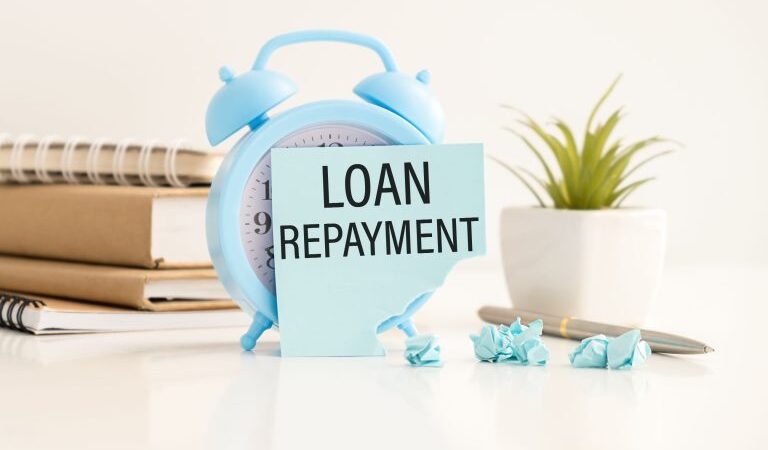Loan repayment entails the restitution of the principal amount deducted by the lender. This repayment procedure typically consists of monthly payments throughout the loan’s term.
It entails the principal amount (the initial borrowed quantity) and the accrued interest. You are additionally granted the choice to settle your loan in one lump quantity before its term expiration.
One or more of the following concerns most individuals: auto loans, mortgages, education loans, or credit card charges. Also, corporations frequently oversee a collection of debts comprising mortgages, credit lines, bonds, and other forms of structured corporate debt.
Benefits of Loan Repayment
Some good things about paying off personal loans are:
Savings on interest
The interest rate on personal loans is higher than on protected loans. So, if you pay off the loan before it’s due, you can save a lot of money on interest, which will save you a lot of money in the long run.
Less debt
Not having any debt lowers your stress and gives you the freedom to decide about money. In addition, you no longer have to worry about losing money, and you have more money you can use for other things.
Better credit score
You have a better chance of getting a loan if you have good credit and a clean credit background. If you pay back a personal loan early, it will help your credit score and make it easier for you to get better terms on another loan in the future.
Types of Loan Repayment
Borrowers have a variety of loan repayment choices to choose from, giving them freedom in how they pay back their debts. These are some popular ways to pay back loans:
Fully Amortizing Payments
When someone takes out a fully amortized loan, they pay a set amount each month until the loan is paid off in full at the end of the term. This is a common way to pay back mortgages and other long-term loans.
Balloon Payments
When the loan is over, a considerable payment is made immediately. This happens a lot in mortgage and business loan agreements.
Fixed Payments
During the loan time, borrowers make equal monthly payments, including the principal and the interest.
Variable Payments
Payments change based on things like changes in interest rates or changes in income. This way of paying back the loan is often used in adjustable-rate mortgages.
Negative Amortization
People who get a loan with negative amortization pay less each month than the interest they borrow. Because of this, the loan’s principal amount goes up over time. This is a common way to pay back loans with an interest-only period. The user is expected to refinance the loan after the interest-only period.
Interest-only Payment
With an interest-only loan, the user only has to repay the monthly interest. The loan’s principal amount doesn’t go down, and at the end of the loan term, the loan must be refinanced. This way of paying back loans is often used for loans with large payments at the end of the loan term.
Graduated Payment
The payments on a graduated loan start cheap and go up over time. This is a common way to repay student loans because the borrower’s income will likely rise over time.
Method of Loan Repayment
The most common ways to pay back a loan are listed below:
Equated Monthly Instalments (EMI)
This is the most common and well-known way to pay off debt. With this method, you must make payments on a specific monthly date until the loan is paid off. Part of each payment goes toward the principal, and part goes toward the interest. Sometimes, your lender may also let you pay off your loan early.
Bullet Payment Option
Some lenders give a “bullet payment” plan to their customers. With this payment plan, all you have to do each month is pay the interest. When the loan’s term ends, you must make the capital payment immediately.
How Does Loan Repayment Work?
You should know a few things about how loans are usually paid back. To begin, you will need to pay back your loan every month. Your payment will be based on the interest rate, the loan time, and the loan amount. You will also have to pay back any fees from the loan.
You will pay a certain amount each month in interest on your loan. This is called the interest rate. How long you have to pay back the loan is called its term. You will pay less each month if the term is longer, but you will pay more in interest over the life of the loan.
The loan amount is called the capital. Each month, some of your payment will go toward the debt, and the rest will go toward interest. The loan amount you owe will slowly go down as you make payments.
Paying back a loan can be challenging, but knowing that you have choices is essential. If you have trouble making payments, you can talk to your lender about your choices. There is a chance that you can extend the loan time, which will make your monthly payments smaller. You could also refinance the loan, which could see your interest rate and monthly payments go down.
Repayment Calculation
How much you repay a loan depends on how much you took, how long you borrowed it, and the interest rate. The interest and capital amount are spread out over the loan term.
The sum is then split by the number of months in the term. An online tool can help you figure out the monthly payment.
Whatever financial institution you take money from must pay it back with interest over the loan term. Being on time with your payments will help your credit score and keep you from getting into too much debt.
What is the Grace Period When Repaying a Loan?
A grace period is a set amount of time after the due date that a payment can be made without being charged a fee. Not all loans have break periods, and the terms can differ depending on the loan type and lender. If your loan has a grace period, you can avoid late fees by paying during this time. However, interest may still be added.
On the other hand, a loan moratorium is a more extended time, like delay or forbearance, when your lender lets you stop making payments while you get your finances in order.
Conclusion
Loan deals spell out how to repay the loan, including how much interest needs to be paid. When people get loans, they should carefully read the terms and conditions of payback and only agree to take on the debt if they can repay it on time. Not doing this can lead to a chain reaction of bad financial outcomes.



